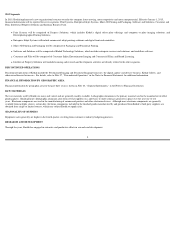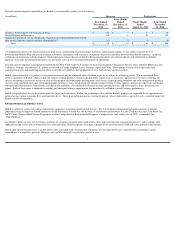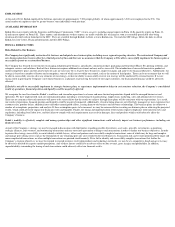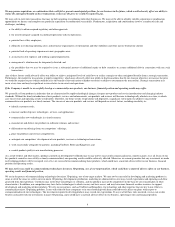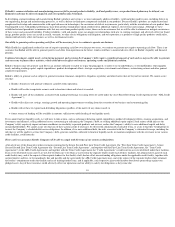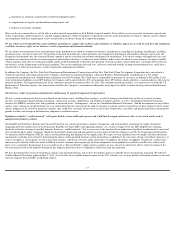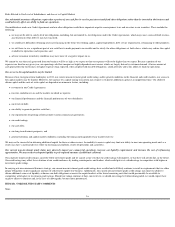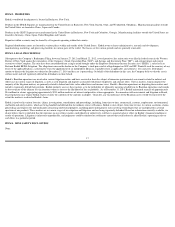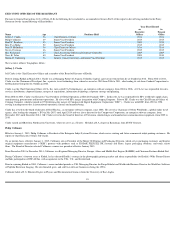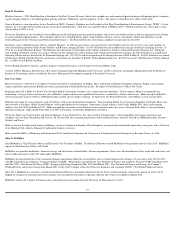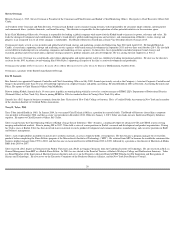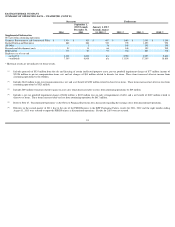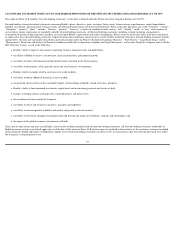Kodak 2014 Annual Report Download - page 17
Download and view the complete annual report
Please find page 17 of the 2014 Kodak annual report below. You can navigate through the pages in the report by either clicking on the pages listed below, or by using the keyword search tool below to find specific information within the annual report.
Risks Related to Our Level of Indebtedness and Access to Capital Markets
Our substantial monetary obligations require that a portion of our cash flow be used to pay interest and fund other obligations rather than be invested in the business and
could adversely affect our ability to fund our operations.
Our indebtedness under our Credit Agreements and our other obligations could have important negative consequences to us and investors in our securities. These include the
following:
We cannot be sure that cash generated from our business will be as high as we expect or that our expenses will not be higher than we expect. Because a portion of our
expenses are fixed in any given year, our operating cash flow margins are highly dependent on revenues, which are largely driven by customer demand. A lower amount of
cash generated from our business or higher expenses than expected, when coupled with our debt obligations, could adversely affect our ability to fund our operations.
Our access to the capital markets may be limited.
Because of our emergence from bankruptcy in 2013, our current non-investment grade credit rating, and/or general conditions in the financial and credit markets, our access to
the capital markets may be limited. Moreover, the urgency of a capital-raising transaction may require us to pursue additional capital at an inopportune time. Our ability to
obtain capital and the costs of such capital are dependent on numerous factors, including:
We may not be successful in obtaining additional capital for these or other reasons. An inability to access capital may limit our ability to meet our operating needs and, as a
result, may have a material adverse effect on our financial condition, results of operations and cash flows.
Our current non-
investment grade status may adversely impact our commercial operations, increase our liquidity requirements and increase the cost of refinancing
opportunities. We may not have adequate liquidity to post required amounts of additional collateral.
Our corporate family credit rating is currently below investment grade and we cannot assure you that our credit ratings will improve, or that they will not decline, in the future.
Our credit ratings may affect the evaluation of our creditworthiness by trading counterparties and lenders, which could put us at a disadvantage to competitors with higher or
investment grade ratings.
In carrying out our commercial business strategy, our current non-investment grade credit ratings have resulted and will likely continue to result in requirements that we either
prepay obligations or post significant amounts of collateral to support our business. Additionally, our current non-investment grade credit ratings may limit our ability to
obtain additional sources of liquidity, refinance our debt obligations or access the capital markets at the lower borrowing costs that would presumably be available to
competitors with higher or investment grade ratings. Should our ratings continue at their current levels, or should our ratings be further downgraded, we would expect these
negative effects to continue and, in the case of a downgrade, become more pronounced.
ITEM 1B. UNRESOLVED STAFF COMMENTS
None.
•
we may not be able to satisfy all of our obligations, including, but not limited to, our obligations under the Credit Agreements, which may cause a cross-default or cross-
acceleration on other debt we may have incurred;
•
we could have difficulties obtaining necessary financing in the future for working capital, capital expenditures, debt service requirements, refinancing or other purposes;
•
we will have to use a significant part of our cash flow to make payments on our debt and to satisfy the other obligations set forth above, which may reduce the capital
available for operations and expansion; and
•
adverse economic or industry conditions may have more of a negative impact on us.
•
covenants in our Credit Agreements;
•
investor confidence in us and the markets in which we operate;
•
our financial performance and the financial performance of our subsidiaries;
•
our levels of debt;
•
our ability to generate positive cash flow;
•
our requirements for posting collateral under various commercial agreements;
•
our credit ratings;
•
our cash flow;
•
our long-term business prospects; and
•
general economic and capital market conditions, including the timing and magnitude of any market recovery.
16


